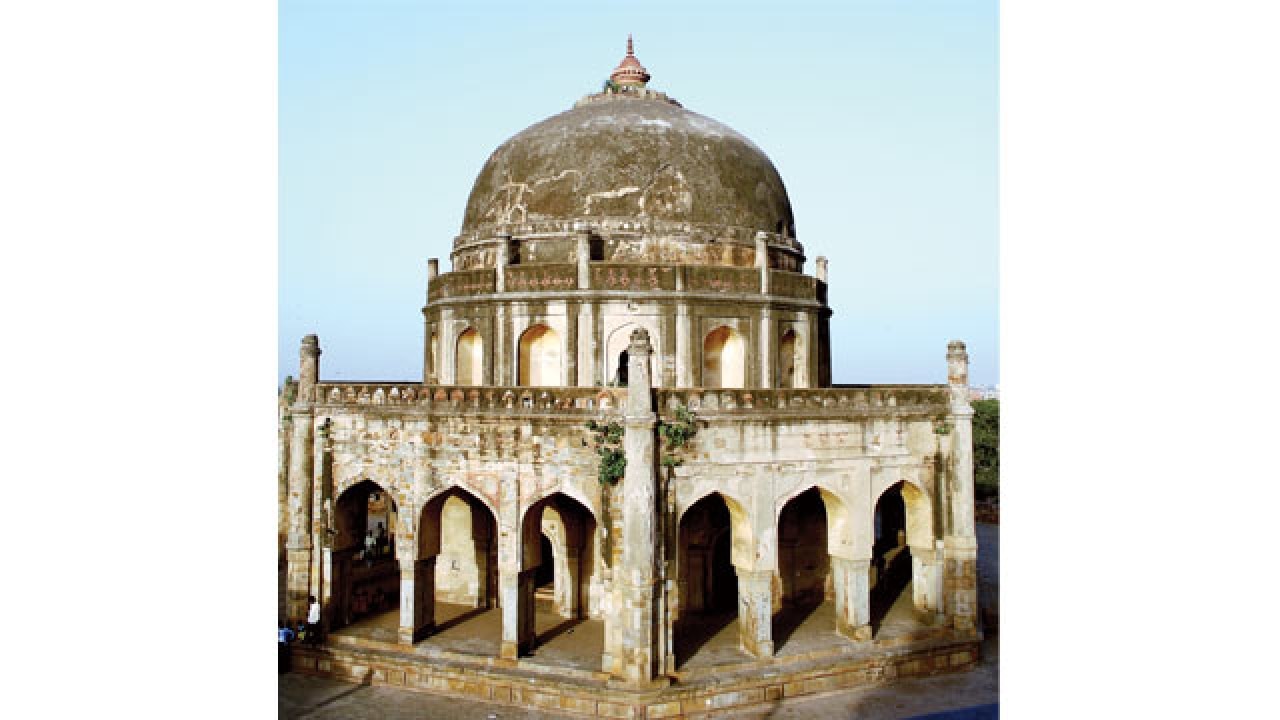
A large number of books have been written about Mughal Architecture; some are scholarly works, but there are many, far too many, coffee table books. For example, a simple enquiry on Google: “Coffee Table Books on Mughal Architecture” throws up a mind-boggling 20,80,000 results in 0.98 seconds! And the entry “Books on The Taj Mahal” threw up about 9,44,000 results in 0.65 seconds. Most of these books deal primarily with the Tomb of Humayun, the Delhi and Agra Forts, Fatehpur Sikri, Buland Darwaza, Sikandra, Etmad-ud-Daulah, and the Delhi Jama Masjid, and we are told this is the complete compendium of Mughal architecture.
The rarely talked about and visited mausoleum of Akbar’s Rajput Queen Heer Kunwari at Sikandra, the Fatehpuri Mosque, built by a senior queen of Shah Jahan, Begum Fatehpuri at Chandni Chowk, the Zeenat-ul-Masjid built by Aurangzeb’s daughter Zeenat-un-Nisa Begum near the Khairati Darwaza of Shahjahanabad, the Zafar Mahal in Mehrauli, the Mausoleum of Sheikh Cheli at Thanesar, the Takht-e-Akbari at Kalanaur, the first Mughal Garden built by Babar at Agra, the Badshahi Mosque, mausoleums of Jahangir and Noor Jahan, all at Lahore, the fantastic Thatta Mosque in Sindh, Maulvi Akhund Mosque and Pari Mahal built by Dara Shikoh at Srinagar and hundreds of other structures in different parts of the sub-continent hardly ever find mention, except of course in scholarly writings. But these are not easily available and the lay reader has little or no access to these works.
The net result is that we end up getting a rather skewed idea of what Mughal architecture is all about. It appears as if Mughal architecture consisted only of marble and red sandstone structures and that it was virtually para-dropped on Delhi, Agra, Sikri, and a few other cities including Lahore, and that it has no connection whatsoever to what preceded it. The reality is rather different; a few buildings in Delhi alone are enough to rapidly dispel this impression. Find the time to go and see the Mausoleum of Adham Khan, son of Akbar’s foster mother Maham Anga. Maham Anga, who died of shock within a few days of the execution of her son, was also buried at the same site.
Adham Khan’s mausoleum is built primarily of a locally available stone, mined from the Aravallis and known as the Delhi quartz. The 10th century King of Delhi, Suraj Pal Tomar used Delhi quartz to build the Suraj Kund.
Between the 12th and 15th century, the same Delhi quartz is the material used in the construction of all the cities built in Delhi prior to Shahjahanabad. Even during the early Mughal period, the Old Fort commissioned by Humayun and later added to by Sher Shah Suri, was built primarily of Delhi quartz, except for the stone cladding on the gates, the Mosque and the Sher Mandal. As was the Khair-ul-Manazil Mosque, located opposite the Old Fort and built by Maham Anga.
The technique of building with rubble masonry held together with the plaster of crushed bricks and slaked limestone was introduced by the Turks and Central Asians. Prior to their 12th century arrival, we built large structures without the aid of a binding material and with massive blocks of stones, fitted into each other with the help of a technique known as Pin and Hole construction. The arrival of the technique of building with rubble and plaster, covering rubble masonry with a thick layer of limestone plaster, and use of the true arch in place of the corbelled arch, did not change the technique of building overnight. In fact, the entire Sultanate and the early Mughal period saw the pin and hole and the rubble plus plaster building techniques coexisting, as with the techniques of combining the corbelled and the true arch.
Adham Khan’s mausoleum was commissioned by Akbar and is most certainly a Mughal period structure, but why should this not be called Mughal architecture? Surely one couldn’t be more Mughal than the Mughl-e-Azam (the great Mughal), and buildings built by Akbar should be considered part of the heritage of Mughal Architecture. Dividing history in water tight compartments used when history was nothing but stories of dynasties, may not be exactly what one needs for studying historical processes.
The author is a historian and organises the Delhi Heritage Walk for children and adults